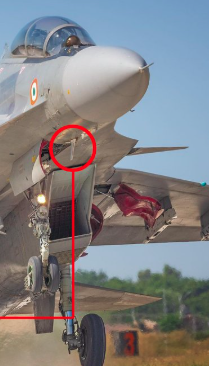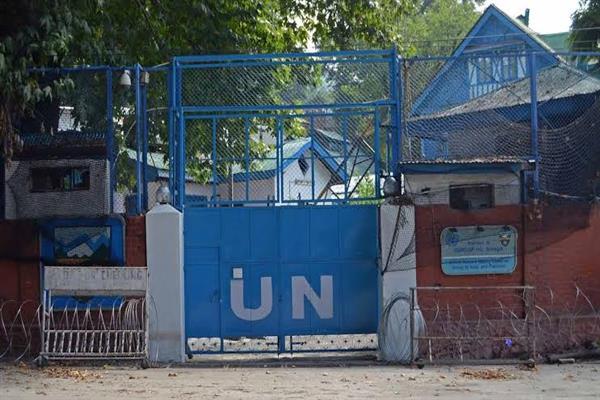SOURCE: AFI

Indian National Space Promotion and Authorization Centre (IN-SPACe) announced a groundbreaking initiative to engage private companies in designing and developing small satellite bus platforms, aiming to reduce India’s reliance on imported space technology. The program, dubbed ‘Satellite Bus as a Service’ (SBaaS), invites Indian non-governmental entities (NGEs) to indigenously create modular satellite bus platforms for hosted payload applications, marking a significant step toward fostering innovation and self-reliance in India’s burgeoning space sector.
Formed in June 2020 under the Department of Space (DOS), IN-SPACe serves as a single-window nodal agency to promote, authorize, and supervise space-related activities by private players in India. The SBaaS initiative aligns with the Indian government’s broader push to open the space sector to non-governmental entities, encouraging private companies to participate in satellite manufacturing, launches, and ground systems development.
Continue readingSOURCE: IDRW.ORG

In a notable development, the Pakistan Air Force (PAF) has reportedly relocated half of its advanced F-16 Block 52+ fighter fleet to Pasni Airfield, located in Gwadar on the northern Arabian Sea coast. The strategic repositioning is seen as a defensive measure aimed at keeping the aircraft outside the detection and engagement envelope of India’s S-400 Triumf air defence systems.
India’s deployment of the Russian-made S-400 system—widely regarded as one of the most capable air defence platforms in the world—has significantly altered the airpower dynamics in South Asia. With its extensive radar coverage and long-range interception capabilities, the S-400 can monitor and target hostile aircraft well beyond conventional airspace boundaries, creating a formidable anti-access/area-denial (A2/AD) bubble.
Continue readingSOURCE: IDRW.ORG

Saab India announced the successful delivery of its AT4 anti-armour weapon system to the Indian Armed Forces, marking a significant milestone in bolstering India’s short-range combat capabilities. Selected through a competitive evaluation process, the AT4, specifically the AT4CS AST variant designed for confined space operations, joins India’s arsenal as a trusted single-shot solution for urban and close-quarters engagements. Amid heightened tensions following the April 22, 2025, Pahalgam attack, the AT4’s induction enhances India’s tactical edge, particularly against armored threats in complex environments.
Selected through a rigorous and competitive evaluation process, the AT4 has now officially joined India’s arsenal as a trusted, single-shot solution for short-range combat scenarios. India has procured the AT4CS AST variant, specifically engineered for operations in confined spaces—making it ideally suited for urban warfare, including use from within buildings, bunkers, and other complex environments.
Continue readingSOURCE: AFI

In the aftermath of the 2019 Balakot airstrike and the subsequent Operation Swift Retort, the Indian Air Force (IAF) faced a harsh reality: its communication and data-sharing systems were vulnerable, as exposed by the downing of a MiG-21 and a friendly-fire incident involving an Mi-17 helicopter. Rather than resting on the laurels of its audacious strike, the IAF embarked on a quiet but transformative upgrade spree, integrating advanced Software-Defined Radios (SDRs) across its fleet and network infrastructure.
By April 2025, multi-band, crypto-agile, and Tactical Data Link (TDL)-capable SDRs have been seamlessly integrated into platforms like the Su-30MKI, Mirage-2000I, LCA Tejas, MiG-29, Rafale, Netra AEW&C, AWACS, and AFNet nodes, including Surface-to-Air Missile (SAM) systems and radars. This homogeneous, jam-resistant, over-the-air (OTA)-updatable ecosystem has redefined India’s network-centric warfare capabilities, leaving conspiracy theorists and adversaries scrambling to keep up.
Continue readingSOURCE: AFI

India and Pakistan have long maintained a fragile agreement that restricts the movement of military aircraft, including fighter jets, near their shared borders. Under the terms of this understanding, both sides are prohibited from operating military jets within a 10-kilometer buffer zone along the border to reduce the risk of accidental escalation and to maintain a basic level of trust.
However, in recent years, there have been multiple instances where this agreement has been breached — particularly by the Pakistan Air Force (PAF). Fighter jets and other military aircraft have frequently been seen coming dangerously close to, and at times crossing, the 10-kilometer mark. Each of these breaches carries a significant risk of sparking a larger military confrontation, whether intentional or accidental.
Continue readingSOURCE: AFI

On April 27, 2025, reports surfaced on social media platforms, including posts on X, alleging that the Pakistan Army has deployed Chinese-origin SH-15 truck-mounted 155mm/52-caliber artillery systems in populated areas of Lahore, raising concerns about potential military strategies and their implications for regional security. These advanced howitzers, capable of striking targets up to 53 kilometers away with rocket-assisted projectiles (RAP), could theoretically reach the Indian city of Amritsar, located approximately 50 kilometers from Lahore.
Speculation suggests that Pakistan may be adopting tactics observed in the Ukraine conflict, concealing heavy weaponry within civilian areas to complicate targeting and response. This development has sparked debate about Pakistan’s military intentions, the role of Chinese defense technology, and the risks of escalating tensions along the India-Pakistan border.
Continue readingSOURCE: AFI

A video circulating widely on social media, particularly noted on X on April 27, 2025, features an alleged Pakistani Air Force (PAF) pilot claiming that the PAF shot down 21 Indian Air Force (IAF) fighter jets during a single operation. While the video is undated, its context and the pilot’s uniform suggest it may have been recorded shortly after Operation Swift Retort, the PAF’s retaliatory airstrikes on February 27, 2019, following India’s Balakot airstrike.
The exaggerated claim, unsupported by historical evidence, has reignited debates about the PAF’s reliance on propaganda, its pursuit of personal glory, and its limited role in supporting Pakistani Army ground operations. This article examines the video’s implications, the reality of Operation Swift Retort, and the broader strategic motivations behind such claims.
Continue readingSOURCE: AFI

In the wake of heightened tensions following the April 22, 2025, Pahalgam terrorist attack, which killed 26 tourists and was linked to Pakistan-backed militants, India has intensified its efforts to curb the influence of Pakistani YouTube channels within its borders. Social media posts on X, notably by @kushal_mehra
on April 26 and 28, 2025, indicate that several Pakistani YouTube channels, including those of Syed Muzammil, Aarzoo Kazmi, and Wassey Iffy, are facing bans in India, with users encountering screenshots signaling restricted access.
While many channels remain accessible, the Indian government’s actions suggest a broader campaign to block content deemed anti-India or propagandistic, driven by concerns over disinformation and national security. This escalation, part of India’s multifaceted response to Pakistan’s alleged terrorism sponsorship, marks a new front in the information warfare between the two nations, with significant implications for digital diplomacy and regional dynamics.
Continue readingSOURCE: RAUNAK KUNDE / NEWS BEAT / IDRW.ORG

The Dynamics and Aeroelasticity Group within the Airframe Directorate of the Aeronautical Development Agency (ADA) plays a pivotal role in ensuring the structural integrity and performance of India’s indigenous combat aircraft. The group is tasked with conducting structural dynamic, flutter, and aeroelastic response analyses, as well as coordinating testing activities for the Light Combat Aircraft (LCA) Airforce Mk-1, LCA Airforce Mk-2, and the Advanced Medium Combat Aircraft (AMCA) programmes.
Modern aircraft design demands rigorous analysis to ensure structures can withstand dynamic loads and remain free from vibration and flutter across the entire flight envelope. For the LCA Mk-2, this process is particularly critical due to the inclusion of an additional control surface—a canard—which requires detailed aeroelastic characterization to validate its performance and safety.
Continue readingSOURCE: RAUNAK KUNDE / NEWS BEAT / IDRW.ORG

Officials from the Gas Turbine Research Establishment (GTRE) have told idrw.org that the organization is confident in its ability to develop and deliver the Kaveri 2.0 engine within five to seven years, provided that the Indian government approves funding and the Indian Air Force (IAF) backs the program.
Speaking to idrw.org, an official closely associated with the current Kaveri Derivative Engine (KDE) project revealed that GTRE aims to achieve final certification for the KDE by the end of 2026. Once certified, the engine will be flight-tested on an older LCA-Tejas Mk1 platform as a demonstrator to showcase the maturity of the technology and its potential evolution into Kaveri 2.0.
Continue readingSOURCE: RAUNAK KUNDE / NEWS BEAT / IDRW.ORG

In a significant leap forward for India’s defense capabilities, DRDO Chairman Dr. Samir V. Kamat has confirmed that the Defence Research and Development Organisation (DRDO) is developing Laser Directed Energy Weapons (LDEWs) that can be mounted on airborne platforms. This ambitious initiative will bolster India’s ability to neutralize aerial threats with pinpoint precision using energy-based technologies.
This confirmation aligns with earlier revelations by idrw.org, which reported that DRDO is working on megawatt (MW)-class LDEWs intended for integration onto larger aircraft platforms such as the Airbus A320, with the initial focus on developing kilowatt (kW)-class systems for rotary and smaller fixed-wing platforms.
Continue readingSOURCE: AFI

In the complex and volatile India-Pakistan strategic landscape, Pakistan’s development of tactical nuclear weapons (TNWs) has raised concerns about their potential use in a future conflict. Specifically, speculation has emerged that Pakistan could deploy TNWs to target high-value Indian naval assets, such as aircraft carriers, given the Indian Navy’s robust defenses against conventional threats like subsonic cruise missiles. This article examines the plausibility, implications, and strategic dynamics of such a scenario, focusing on the Indian Navy’s aircraft carriers and their defenses, notably the Medium-Range Surface-to-Air Missile (MR-SAM) system.
India’s aircraft carriers, including the INS Vikramaditya and the indigenously built INS Vikrant, are linchpins of the Indian Navy’s power projection in the Indian Ocean Region (IOR). These carriers, costing billions of dollars, are critical for maintaining maritime dominance, securing sea lines of communication, and projecting air power far from Indian shores. In a potential conflict with Pakistan, they would play a pivotal role in enforcing blockades, conducting strikes, and countering Pakistan’s naval and air assets.
Continue readingSOURCE: AFI

In the volatile South Asian geopolitical landscape, India and Pakistan maintain robust air defense systems to counter aerial threats, reflecting their ongoing rivalry and mutual deterrence strategies. A comparative analysis of their air defense systems, as detailed in a recent infographic shared on X, reveals stark contrasts in range, radar technology, and target engagement capabilities.
With India’s layered, multi-tiered defenses contrasting against Pakistan’s more limited but evolving systems.
Continue readingSOURCE: AFI

On April 28, 2025, a Lockheed C-130 Hercules belonging to the Turkish Air Force was tracked flying over the Arabian Sea, as reported by the flight tracking service ADS-B Exchange. The aircraft, bearing the registration number 68-01606 and operating under the call sign TUAF509, was detected at 14:20:11Z (UTC) with a squawk code of 4701.
The flight’s unusual route, which appeared to be heading toward Karachi, Pakistan, has sparked widespread curiosity about its purpose and Turkey’s military activities in the region. Open-source intelligence (OSINT) analysis and flight tracking data have fueled speculation that the aircraft may be involved in an urgent transfer of ammunition for Pakistan’s unmanned aerial vehicle (UAV) fleet.
Continue readingSOURCE: AFI

The United Nations Military Observer Group in India and Pakistan (UNMOGIP), established in 1949 to monitor the ceasefire line in Jammu and Kashmir, has long outlived its relevance. With its main office in Srinagar, the UNMOGIP has been a vestige of a bygone era, rooted in a context that no longer aligns with the region’s geopolitical realities.
As India asserts its sovereignty over Jammu and Kashmir, particularly following the revocation of Article 370 in 2019, it is time for the government to decisively close the UNMOGIP office in Srinagar. This move would reaffirm India’s stance that Jammu and Kashmir is an integral part of the nation and signal an end to outdated international oversight.
Continue reading